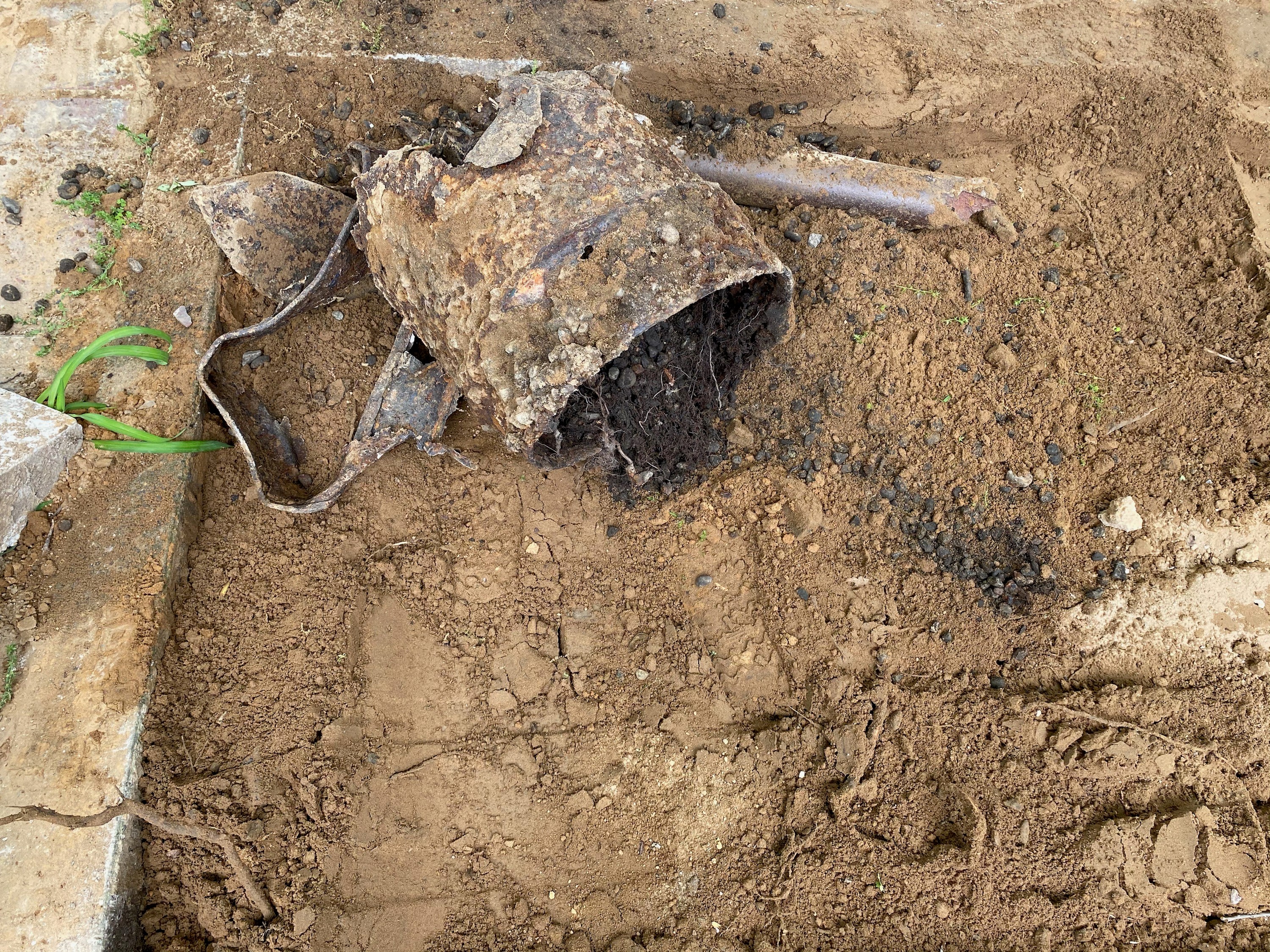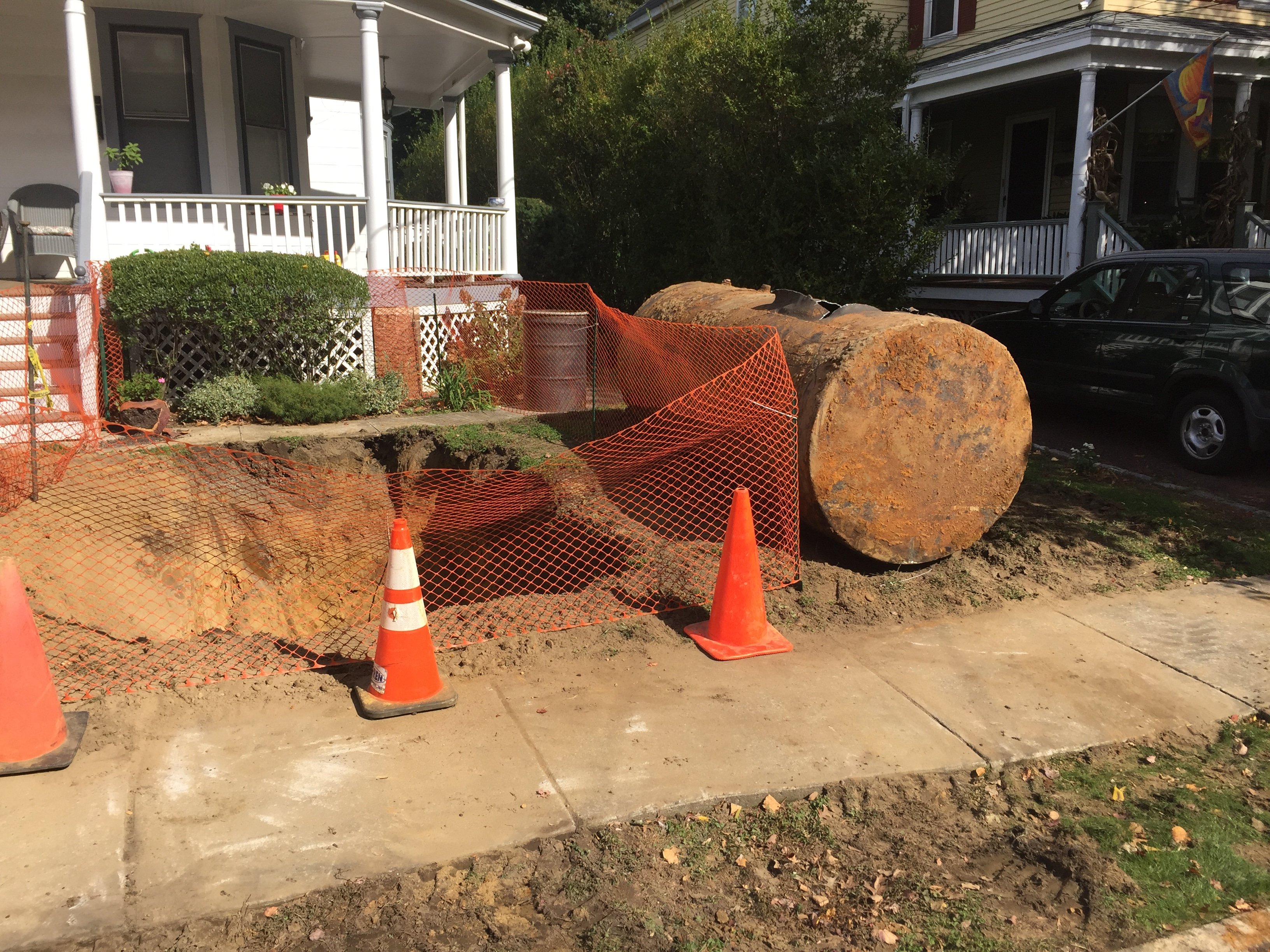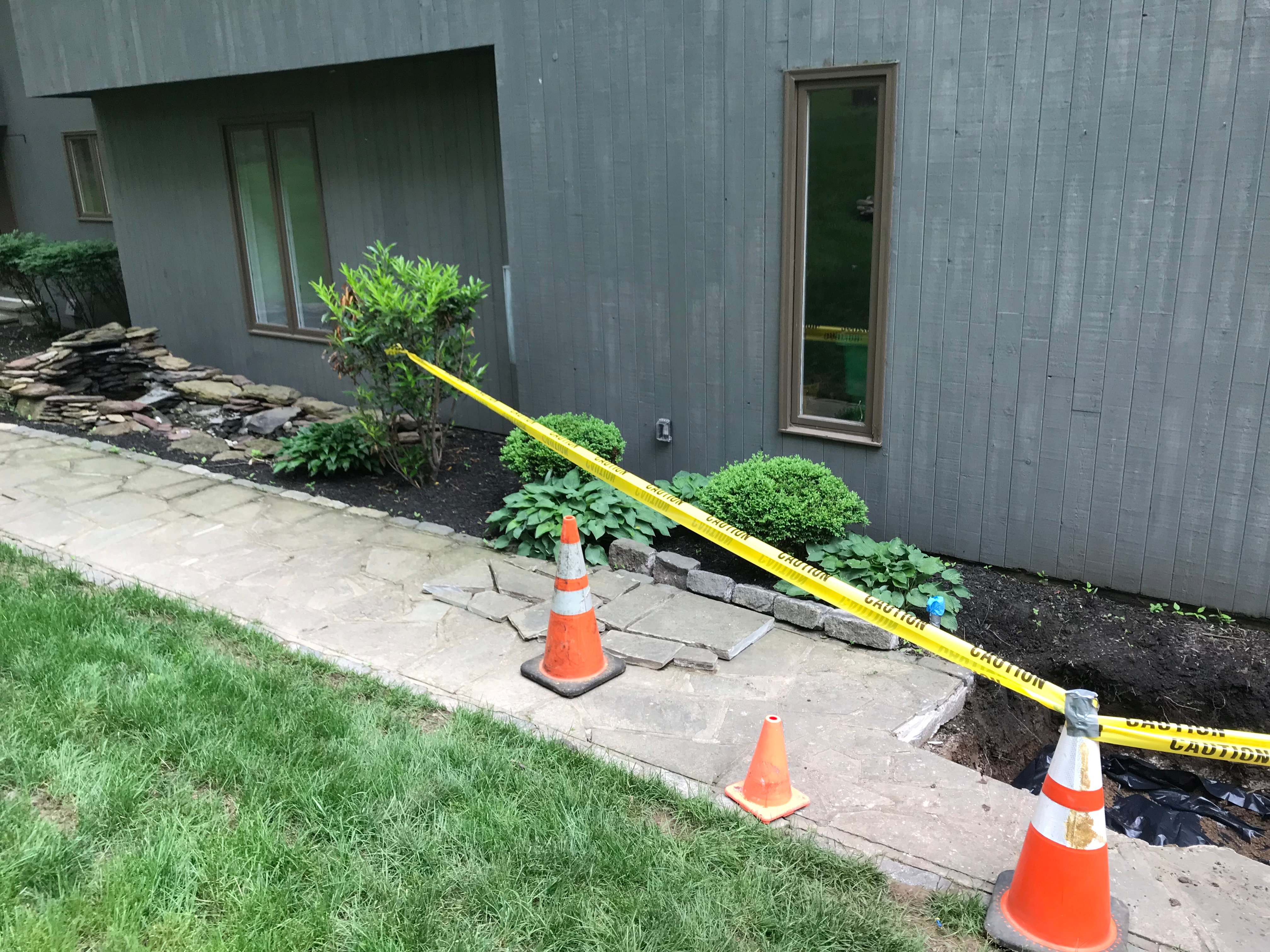Why Metal Detectors are ineffective for Tank Sweeps
Metal detector tank sweeps use a $700.00 instrument. Tank scan companies with metal detectors charge around $200.00 to search for ferrous metal, assuming a metal object found would be an oil tank. The issue there will always be some metal in the ground, either naturally occurring or from pipes, metal rebar and/or mesh in concrete or in the photo below buried metal debris.
Thorough tank sweeps utilize GPR (Ground Penetrating Radar), which is what is used for commercial properties. GPR tank sweeps searches for objects that have an indicate shape of a storage tank.
The photo below shows the image that is an unmistakable buried oil tank. The equipment utilized below that captured this image costs more than $50,000.00, and is accurate and thorough, which is what you want when you perform due diligence for underground oil tanks.
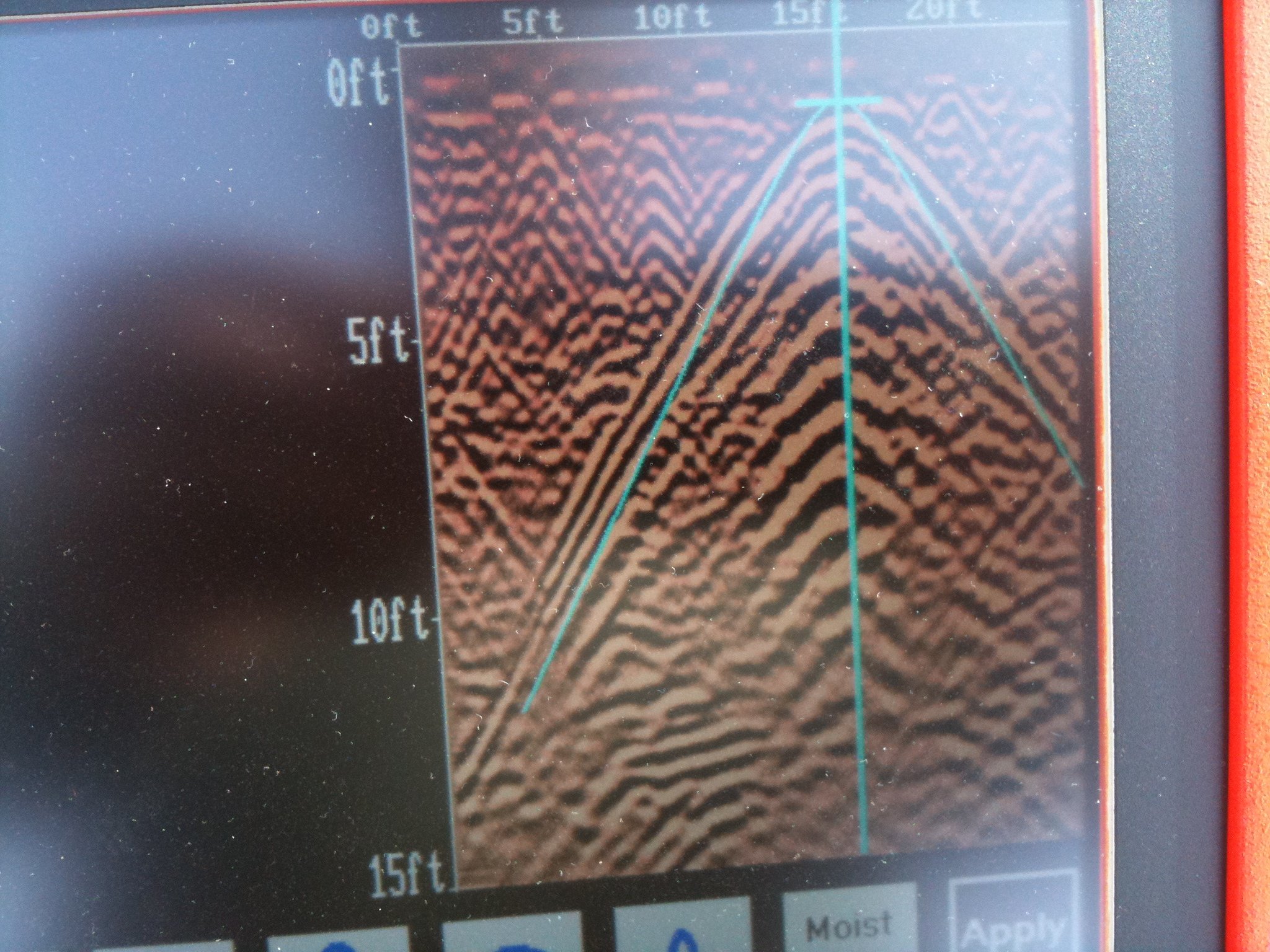
Why is a tank sweep/tank scan with GPR so important in a real estate transaction? Because many homes had oil heat and many homes still have oil tanks underground that are hidden.
Oil heat became popular in the 1940's and started to decline close to the late 1970's and early 1980's. Natural gas only surpassed oil as a fuel source in the early 1980's. So, if you live in New Jersey or Pennsylvania and your home was built before 1980, there is a large possibility that the home had oil heat at one time.
To understand how likely are you to find an oil tank during a residential tank sweep/tank scan you should know about the history of heating and human nature.
When a heating system was converted to natural gas it was common for people to simply leave the oil tank where is was, or in other words abandoned the oil tank. Why would someone not remove an AST (Aboveground Storage Tank) or a UST (Underground Storage Tanks)? Because it costs money. The properties where someone has lived for years or when the kids help mom and dad downsize the old unused (abandoned) oil tank invariably comes up as an issue that needs to be addressed to sell the home.
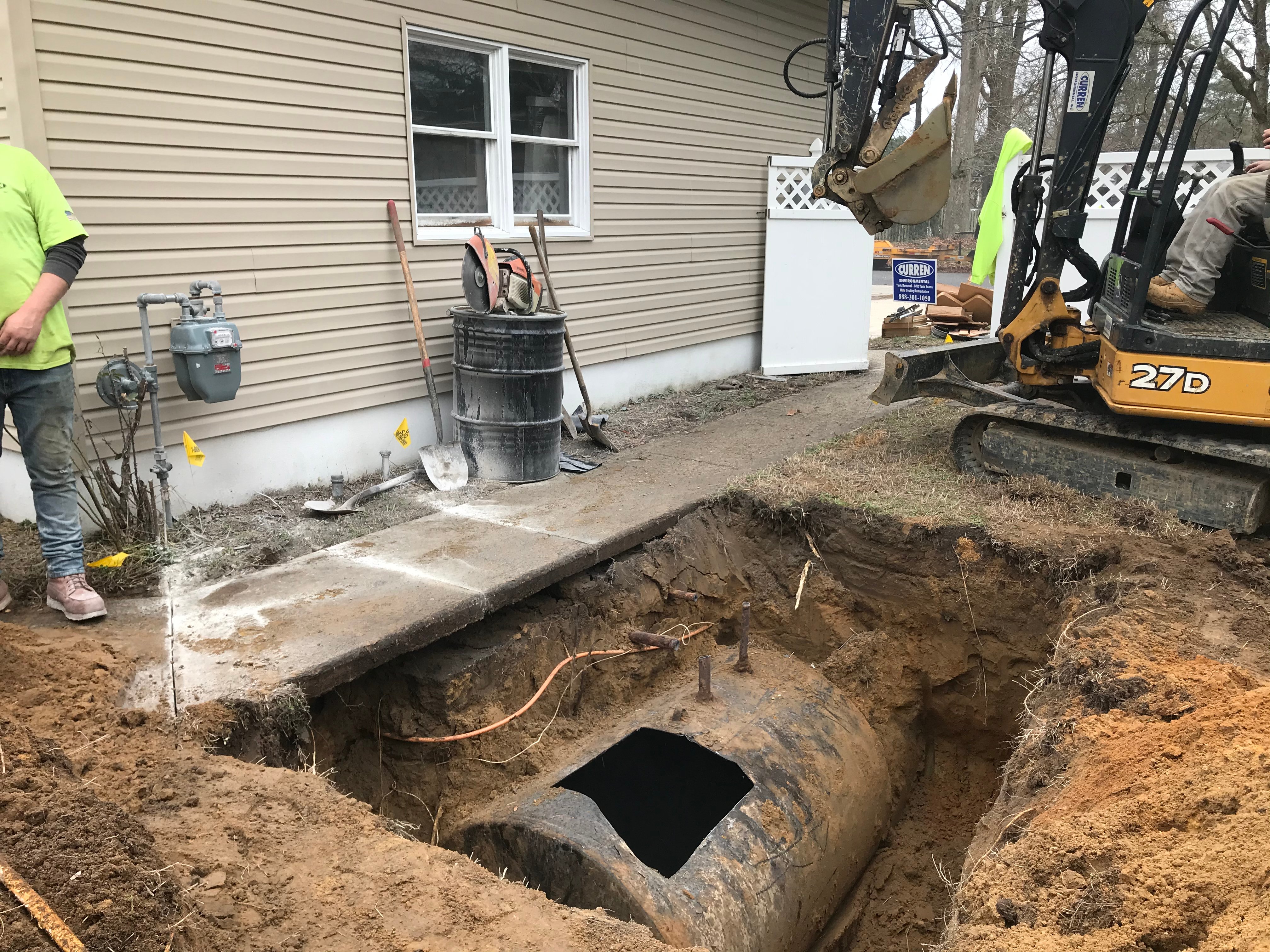
Those properties are easy. Owner or family knows there is a tank, discloses it (families don't want the tank to be an issue after the sale so they remove it) and a realtor or buyer wants it removed so the home can be purchased. (Tough to get a mortgage or homeowners insurance on a house with an out of service oil tank.)
The hard properties are the other 87% of homes built before 1980 that likely had oil heat but owner has no record of a tank, tank abandonment or tank removal.
This photo has an oil tank below the sidewalk. A metal detector could not find the tanks as the concrete had wire mesh so the entire length of the sidewalk gave off a signature of metal. GPR found the tank image.
We have removed thousands of tanks in New Jersey and Pennsylvania over the past 25 years and a common situation is current owner claims no knowledge of a prior oil tank and their ownership is less than 15 years, so a tank that was known before say 2005 is a data gap. This is the real reason why tank sweeps are so important. The oil tank from 1940, 1950, 1960 or 1970 hasn't been used for years and it was never removed because it cost money.
Anyone knowledgeable in residential real estate transaction knows that tank sweeps are as common as home inspections of properties of a certain age. Professionals also know that tank sweeps with GPR are the thorough approach. Metal detector tank sweeps should be left to the beach combers looking for lost coins and jewelry.

